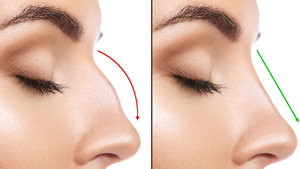Iran Nose Job
Looking for other medical or cosmetic treatments in Iran? Sign up and our resident physicians will help you find the right doctor.
Speak directly with a licensed medical professional
We issue medical visas during the COVID-19 pandemic (Since Jan 2021). All hospitals, clinics, hotels and drivers follow strict protocols to ensure safety.
Our prices are better than north America, Europe and most of Asia
Modern, clean and world-standard facilities, Pro doctors
Unique, captivating and refreshing hospitality and eastern beauty

Rhinoplasty in Iran

Revision Rhinoplasty

Weight Loss Surgery

Breast Augmentation

Breast Lift

Brazilian Butt Lift

Otoplasty

Mommy Makeover

Tummy Tuck

Gastric Bypass

Gastric Sleeve

Labiaplasty

Dental Implant

Composite Veneer

Plastic Surgery in Iran

Hair Transplant in Iran

Dentistry in Iran

Orthopedics in Iran

Fertility Treatments

Ent (Ear, Nose and Throat)

Cardiology in Iran

Eye Surgery in Iran
Looking for other medical or cosmetic treatments in Iran? Sign up and our resident physicians will help you find the right doctor.

Sample Rhinoplasty Packages
| Package | Accommodation | Price |
|---|---|---|
| Gold | 3 Star hotels | 1,715 € |
| Platinum | 4 Star hotels | 1,870 € |
| Diamond | 5 Star hotels | 2,095 € |

Sample Revision Rhinoplasty Packages
| Package | Accommodation | Price |
|---|---|---|
| Gold | 3 Star hotels | 2,160 € |
| Platinum | 4 Star hotels | 2,325 € |
| Diamond | 5 Star hotels | 2,540 € |
| Procedures | Details | Price (EUR) |
|---|---|---|
| General Rhinoplasty | Can be performed as a reconstructive surgery, which restores form and function, a cosmetic surgery, which enhances the appearance, or both. | 1500 € |
| Revision Rhinoplasty | Performed for patients that have previously undergone rhinoplasty one or more times, who desire improvements in appearance and function. | 1945 € |
| Septoplasty | Straightening the bone and cartilage dividing the nostrils, known as the septum. | 1215 € |
| Septorhinoplasty | A correction of the form and function of the nose and nasal septum. A combination of rhinoplasty and septoplasty. | 2160 € |
| Balloon Sinuplasty | A procedure to clear blocked sinuses. A type of endoscopic nasal surgery. | 1540 € |
| Closed Rhinoplasty | A specialized rhinoplasty technique where all incisions are made within the nose, leaving no visible scars. | 2055 € |
What is included in each package:
Medical inclusions

Travel inclusions
Sample treatment schedule & itinerary:
Before arrival
Day 1
Day 2
Day 3
Day 4 & 5
Day 6
Day 7
After leaving
Disclaimer:
Contact us to find out which rhinoplasty package and surgeon is right for you.
During your online consultation meeting, we will discuss factors that will determine what is likely to work well for you. After you arrive, your doctor will go over the details of your case, and show you the results you can expect. Here are the steps that will be taken before your surgery starts:


Rhinoplasty does not have an ordered series of steps. Each surgery is unique and customized for the specific anatomy and goals of the person having the surgery. The surgeon’s experience and your comfort with him or her are just as important as the final cost of the surgery.
The best Iran nose jobs are typically performed under general anesthesia. During the surgery, you are unconscious and do not feel any pain. After the surgery, a nasal splint is placed to help the nasal structure remain stable during the healing process. Five to seven days after surgery, you need to visit your surgeon to get your nasal splint removed and the bandage replaced. During this period, you have to follow a number of instructions for better healing.
Results
Very slight changes to your structure, measured in millimeters, can make a large difference in how your nose looks. Most of the time, an experienced surgeon can get results both of you are satisfied with. But in some cases, the slight changes aren’t enough, and you and your surgeon might decide to do a second surgery for further changes. If this is the case, you must wait at least a year for the follow-up surgery, to give your results time to finalize.

Different nasal structures

Popular Iran nose job types
Iran nose job for men

Looking for other medical or cosmetic treatments in Iran? Sign up and our resident physicians will help you find the right doctor.
All surgeries have risks. Fortunately, Iran’s nose job risks are small and complications are rare. Your doctor will talk to you about the surgery’s risks and benefits in detail before the operation.
Your medical insurance will most likely not cover Iran nose jobs or Revision rhinoplasty in Iran. Our prices allow you to not be reliant on insurance coverage for the best possible treatment. We guarantee our results and follow up with you long after you have completed your procedure.
The cost of rhinoplasty in Iran depends on several factors, including the complexity of the surgery, the surgeon’s training and experience, and your level of accommodation.
Rhinoplasty in Iran is both cheap and reputable across the whole region. All doctors we work with have over 10+ years experience performing rhinoplasty in Iran, conduct 50-100 surgeries per month and work with a wide range of nose types, conditions and aesthetic requests.
Each case is unique. That’s why we pair you with specialized professionals with over 10+ years of experience performing rhinoplasty in Iran. We guarantee the work of our doctors because we know they perform some of the best rhinoplasties in Iran.
Iran has held the title of the nose job capital of the world for several periods since 2000. Although other nations such as Brazil and the US have since caught up, the Persian nose job remains a global standard.
Determining the number 1 country for plastic surgery is subjective, but the best rhinoplasty in Iran is just as beautiful and costs half as much as it would in Europe or America.
Persian Nose jobs and Revision rhinoplasty in Iran are amongst the most popular procedures in the entire region. We only work with reputable surgeons who guarantee their results.
Lots of countries around the world have famous plastic surgeons, but if you are choosing to get revision rhinoplasty Iran is the right choice for you.
If you are doing your procedure in America or Europe, you have to spend quite a bit for the best treatment. But the best rhinoplasty in Iran not only matches the quality but is on average 50% cheaper than clinics in western countries.
The cost of your surgery depends on your procedure, doctor, and post-operative care. Iran nose jobs cost between €1,600 – €3,400. If you want to know exactly how much an Iran nose job costs, contact our award-winning support team.
Yes. Before your consultation, your doctor will take standardized photographs of multiple views of your face. These photos can be manipulated to give you an idea of what your final results might look like.
Not for most people. One day after surgery, most people rate their pain between 0 and 4 out of 10.
NO. Packing can be very uncomfortable. But you’ll likely have some soft splints in your nose. These splints have a hole in them to make it possible to breathe through them, at least for a few days. Doctors easily remove these splints at the one-week visit.
Bruising is uncommon. If you do have some minor bruising, it usually lasts a week or so.
Iran nose job packages can vary in price based on your surgeon, type of surgery, and accommodation. Each package comes with all medical and travel essentials for the most comfortable and reliable experience.
Iranian surgeons compete head to head with their European and American counterparts. In order to provide you with the best rhinoplasty in Iran, we sit down and get to know you, your medical history, and your expectations. We only work with doctors that provide some of the best rhinoplasties in Iran.
Even though they may seem conservative, Iranian men and women are equally likely to undergo at least one cosmetic procedure. You can see the hallmark of the classic Persian nose job throughout the country.
An Iran nose job doesn’t just enhance your looks, it’s a status symbol. Thanks to a multitude of skilled and specialized surgeons, Persian nose jobs are affordable, available, and highly sought after.
A nose job is a surgical procedure to modify the structure of the nose, usually by making changes to the nasal bone or cartilage. Rhinoplasty in Iran, commonly known as a Persian Nose job, is performed to address the aesthetic and functional aspects of the nose.
If you are choosing to get revision rhinoplasty Iran is the right choice for you. Few countries can offer the quality, experience, and prices that we can.
One of the cheapest procedures you can do to enhance your looks is a Rhinoplasty in Iran, commonly known as a Persian Nose job. If you have undergone prior surgeries and would like a revision rhinoplasty Iran should be high on your list.
If you are looking to do a nose job in Iran price is one of the most convenient factors. Iran nose jobs cost between €1,600 – €3,400. The cost of rhinoplasty in Iran is much more affordable while not sacrificing quality.
One of the main reasons why patients choose to undergo an Iran nose job is the price of the procedure and post-operative care. Iran nose jobs cost between €1,600 – €3,400.